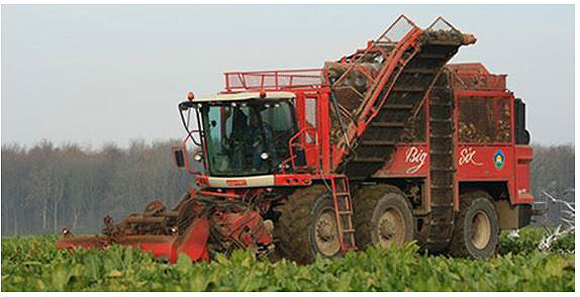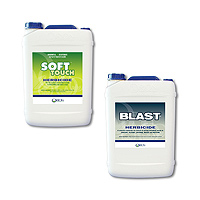 |
|
|
|
Issue 62 / Autumn / April 2015
Hi #subname#
 Welcome to the April edition of Specialty Seed's SeedData Newsletter.
Welcome to the April edition of Specialty Seed's SeedData Newsletter.
As always at this time of year we start to think about the upcoming winter.
From a Canterbury point of view I certainly hope we get some more rain fall prior to it turning cold.
Feed is very tight and compounding the problem is the short supply of supplementary feed and poor dryland winter feed crops.
On a much brighter note I spent some time looking around the South Island Field day's site recently.
As you may or may not know this was the first time the event was held on the new site at Courtney just west of Christchurch.
Talking to exhibiters and on-lookers, it looks like the organising committee have got most things right.
The new site at courtenay offers plenty of room for both displays and demonstrations made the three days a success.
I'm sure there will be areas that need improvement however many of these issues don't become obvious until you actually run the event of course.
In this month's Seedata we will look at assessing dry matter yields, percentage of dry matter and the feeding out of fodder beet crops. We will also offer tips on how to manage your newly establishing pasture.
Please browse the topics below:

Fodder beet feeding guide and yield assessment
 This past month I have also been arranging some training sessions on the all-important job of feeding out fodder beet to "new entrants" in the fodder beet business.
This past month I have also been arranging some training sessions on the all-important job of feeding out fodder beet to "new entrants" in the fodder beet business.
Even if you are experienced, a quick glance over the information below will be well worth your while.
Fodder beet yield assessment guide.
Outside of establishing your fodder beet crops successfully the next most important time will be planning to feed it to your stock.
As with establishing your crop attention to detail at this stage is critical.
I have noticed over the last couple of years in particular some farmers have moved away from the (mostly recommended) precision drilling of their fodder beet to other methods.
If you click on the below link you will find information on how to test your crops for yield and dry matter percentage regardless of how you established your crops.
Download: Specialty Seeds "Fodder beet yield assessment guide"
Fodder beet feeding guide.
While doing my homework on assessing the yield and dry matter percentage yields of fodder beet I took the opportunity to completely re write our fodder beet grazing guide.
If you are a newbie or experienced fodder beet grazer please take the time to read this as it's a critical component to the overall success of your fodder beet crop.
I'd like to acknowledge the help from Gavin Milne of DLF Seeds New Zealand in the production of this guide.
Download: Specialty Seeds "Fodder beet grazing guide"
Should you have any questions or would like to talk one on one about any aspect of feeding out your fodder beet crop or winter green feed crop please contact us.
Website Link: Click here to view the Specialty Seeds Fodder beet website page
Contact Link: Contact Specialty Seeds if you have any questions.

Fodder beet harvester - as seen at the South Island field days - Gearing up for the expanding New Zealand fodder beet area
|
Back to top

Pasture Management tips for new grasses.
The first grazing of your new ryegrass / clover pasture.
Some would say that the first grazing is the most important as it will stimulate your young plants into action.
After the first grazing your new pasture will tiller better, grow quicker and provide a better environment for the slower establishing clovers.
 Before the first grazing we recommend you test how well the new pasture has established using the pull test.
If the new pasture pulls out of the ground during a gentle pull on it, then it's not ready to be grazed.
Before the first grazing we recommend you test how well the new pasture has established using the pull test.
If the new pasture pulls out of the ground during a gentle pull on it, then it's not ready to be grazed.
Grazing your pasture for the first time normally occurs between 6 - 10 weeks after sowing. This will depend on the sow date and soil conditions that follow drilling.
The new pasture is typically at between 8 - 10 cm high and should be grazed, by young stock, down to between 4 - 6 cm in height.
Subsequent grazings
After the first grazing your new pasture should be grazed more frequently than established pastures and kept shorter as this once again encourages the plant to tiller and helps stop clovers from getting shaded out.
As a general rule it is best to graze down from 3500 kg's DM/ha to 1500 kg's DM/ ha, the correct time is when the ryegrass has between 2.5 and 3 leaves per tiller.
Weed Control
The control of weeds in the first few weeks is a very important step that will help ensure maximum long term production from your new pasture.
The weed control has to occur early for best results.
Below are two links to labels of chemicals that we feel offer a wide range of weed control and more importantly are gentle on the newly establishing pasture.
Please note that if you have pasture herbs, (i.e. chicory and plantain) special care is required when chemically treating them.

- Soft Touch:
Soft touch is a selective weed killer recommended for the control of broad-leaved weeds in young and established pasture, grass and white clover seed crops, peas and in cereal crops.
Click here to download more information on Soft Touch herbicide.
- Blast:
Blast for post emergent management of broadleaf weeds in clover, lucerne, chicory, new and mature pasture and maize. Click here for more information on Blast herbicide.
Fertiliser
Fertiliser requirements in new pastures will vary widely in each different situation.
Prior to any new pasture being sown we recommend that you obtain a soil test and once you have the results go over them with your fertiliser representative and work out the requirements pre drill and apply them.
The clover in your paddocks will not start producing nitrogen for between 9 - 12 months depending on your drilling situation.
We therefore recommend that small amounts of nitrogen be applied during this period at least. After the first grazing we would recommend a rate of 25 kg N/ha is applied.
The amount of nitrogen applied after this period should be determined after consultation with your local fertiliser representative.
Things to avoid
The two main issues to avoid doing with your new pasture are grazing during dry periods and making silage or hay crops in the first season as this will have a big effect on the establishment of your clovers.
Both these practices should be avoided at all costs. Also extra care when grazing the new pastures during the winter months is very important as winter pugging is a quick way to do significant damage to it.
Contact Link: Contact Specialty Seeds for more information on pasture management.
 As always, we hope this issue has been of some value to you. If you have a comment on this newsletter or anything on our website, please give us a call on our Freephone: 0800 727 8873, send us an email at: mail@specseed.co.nz. As always, we hope this issue has been of some value to you. If you have a comment on this newsletter or anything on our website, please give us a call on our Freephone: 0800 727 8873, send us an email at: mail@specseed.co.nz.
Kind Regards

Stephen Finch & David Percival
Specialty Seeds - New Zealand
|
|
|
|
 |
|
|

|
If you are having trouble viewing this email, .
If you would like to be removed from this newsletter please click here to
|
